Embark on a linguistic journey with vocabulary unit 3 level f, where we delve into the depths of word meanings, sentence structures, and word families. Get ready to expand your vocabulary and elevate your language proficiency!
This unit will provide you with a comprehensive understanding of key vocabulary words, their usage in various contexts, and the nuances of their meanings. Prepare to engage in interactive activities that will reinforce your learning and make the process both enjoyable and effective.
Word Meanings
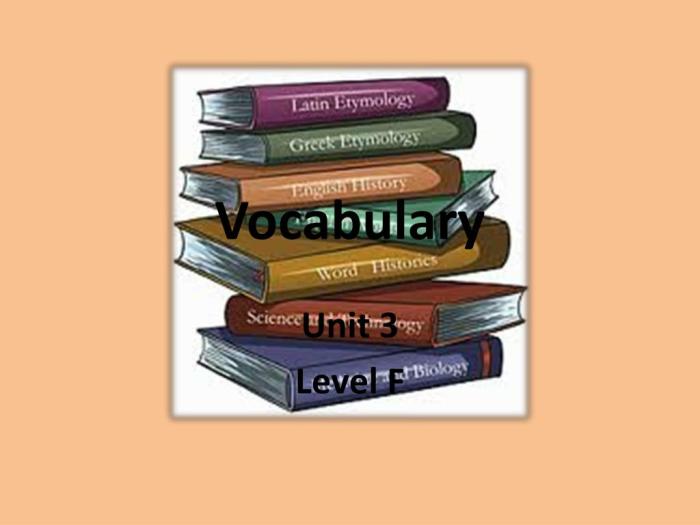
In this section, we’ll delve into the meanings of key vocabulary words from Unit 3 Level F. Understanding these words is crucial for comprehending the unit’s content and expressing yourself effectively.
Let’s dive right in!
Words in Context
- Enumerate: To list or name one by one; count.
- Exemplary: Serving as a model or example; outstanding.
- Fastidious: Paying great attention to detail; excessively concerned with cleanliness or order.
- Incessant: Continuing without interruption; persistent.
- Intermittent: Occurring at irregular intervals; not continuous.
By understanding these words and their usage, you’ll enhance your vocabulary and ability to communicate precisely.
Vocabulary in Practice: Vocabulary Unit 3 Level F
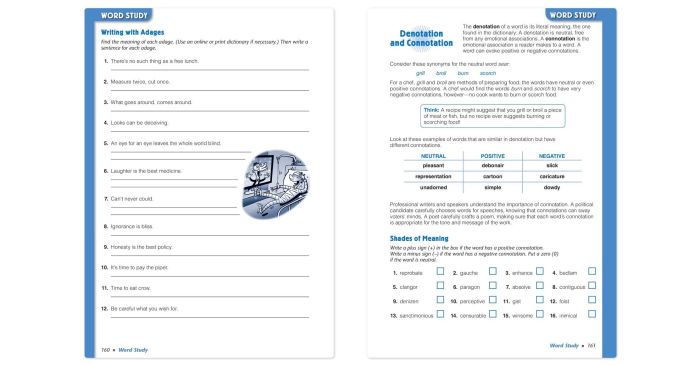
Now that you know the meanings of the new vocabulary words, let’s explore how to use them in different types of sentences.
Level F of Vocabulary Unit 3 builds upon the foundational vocabulary established in earlier units, expanding your linguistic repertoire. It’s a natural progression from Unit 1 Vocabulary Level E , which introduced you to essential terms and concepts. As you delve into Level F, you’ll encounter more complex and nuanced vocabulary, enriching your ability to communicate effectively and comprehend a wider range of texts.
Sentence Structures
We can use the vocabulary words in different sentence structures to express various ideas and emotions.
| Sentence Type | Example |
|---|---|
| Declarative | The prudent decision was made to postpone the meeting. |
| Interrogative | Can you provide me with a succinct explanation of the concept? |
| Exclamatory | What a magnificent view! |
| Imperative | Please expedite the delivery of the package. |
Synonyms and Antonyms
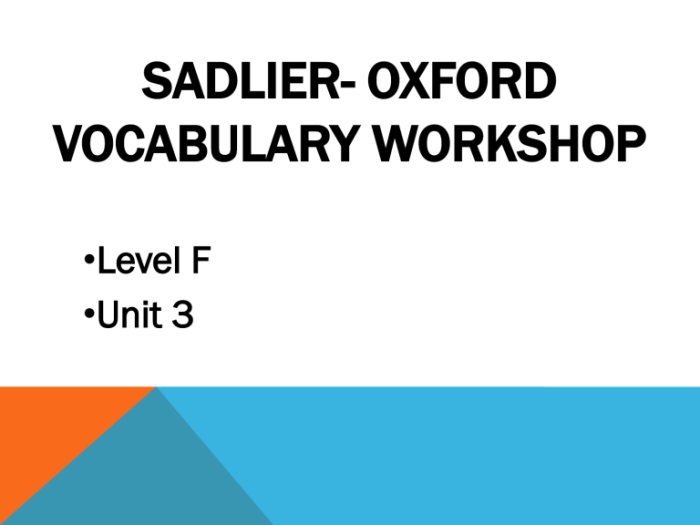
In this section, we will delve into the fascinating world of synonyms and antonyms. Synonyms are words that share similar meanings, while antonyms are words that express opposite meanings. Understanding the nuances between these words can greatly enhance your vocabulary and improve your communication skills.
Synonyms allow us to express the same idea in different ways, adding variety and richness to our language. For example, the words “happy” and “joyful” are synonyms that convey a positive emotional state. However, there are subtle differences in their connotations.
“Happy” suggests a more general feeling of contentment, while “joyful” implies an intense sense of delight and exuberance.
Antonyms
Antonyms, on the other hand, provide a contrasting perspective, highlighting the opposite ends of a spectrum. Consider the words “hot” and “cold.” These antonyms represent two extreme temperatures. “Hot” describes a high temperature that can cause discomfort or even harm, while “cold” indicates a low temperature that can induce shivering and discomfort.
Understanding synonyms and antonyms is crucial for effective communication. By using the right words, we can convey our thoughts and ideas with greater clarity and precision. It also allows us to avoid repetition and maintain the flow of our language.
Word Families
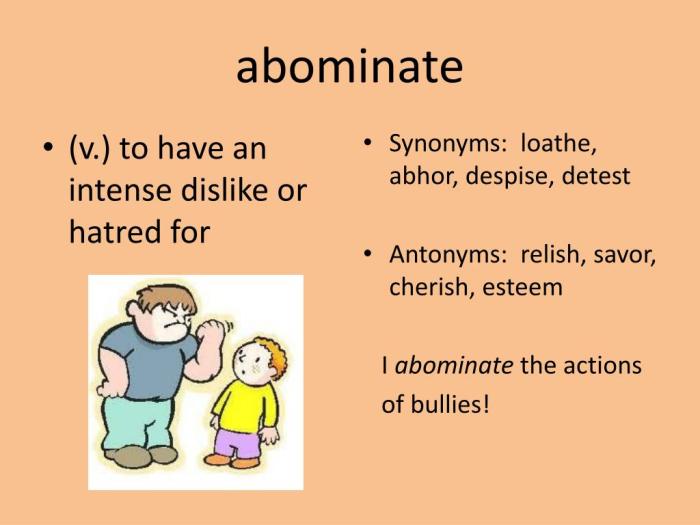
Word families are groups of words that share a common root word. The root word is the base word from which other words are formed. Prefixes and suffixes are added to the root word to create new words with different meanings.
Word families can help expand vocabulary by showing how words are related to each other. For example, the root word “mit” means “send.” By adding different prefixes and suffixes, we can create a whole family of words related to sending, such as “submit,” “transmit,” “admit,” and “remit.”
Root Words
The root word is the core of a word family. It carries the basic meaning of the word. For example, the root word “scribe” means “to write.” Adding different prefixes and suffixes to the root word “scribe” can create new words with different meanings, such as “subscribe,” “describe,” “inscribe,” and “prescribe.”
Prefixes
Prefixes are added to the beginning of a root word to change its meaning. For example, the prefix “re-” means “again.” Adding the prefix “re-” to the root word “write” creates the new word “rewrite,” which means “to write again.”
Suffixes, Vocabulary unit 3 level f
Suffixes are added to the end of a root word to change its meaning. For example, the suffix “-tion” means “the act of.” Adding the suffix “-tion” to the root word “scribe” creates the new word “subscription,” which means “the act of subscribing.”
Vocabulary Activities
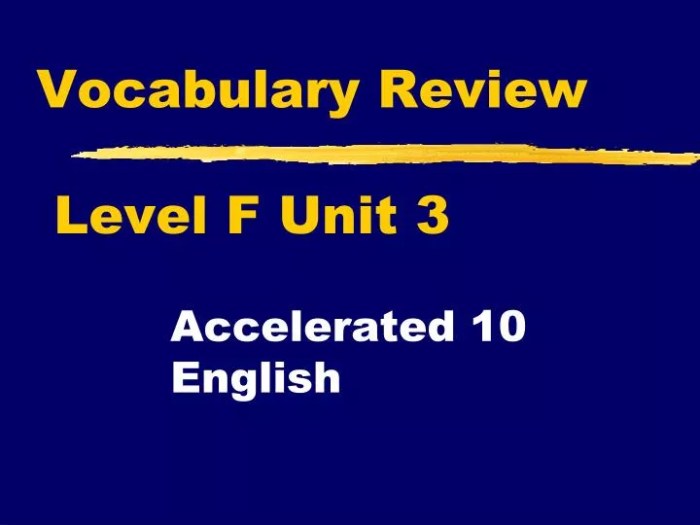
Engaging students in interactive activities is a crucial aspect of vocabulary instruction. These activities not only reinforce the meanings of new words but also foster critical thinking and problem-solving skills.
In this section, we will explore two effective vocabulary activities that can be incorporated into your lesson plans:
Crossword Puzzle and Word Search
Crossword puzzles and word searches are classic vocabulary-building activities that can be tailored to any grade level or content area. By creating puzzles that incorporate the key vocabulary words, students can engage in a fun and challenging way to practice their understanding.
To create a crossword puzzle, start by writing down a list of clues that relate to the target vocabulary words. Each clue should provide a definition, synonym, or context that helps students identify the correct answer. For example, a clue for the word “synonym” could be “a word that means the same as another word.”
Once you have created the clues, arrange them in a grid and fill in the corresponding answers.
Word searches are another engaging activity that can help students practice their vocabulary. To create a word search, start by writing down a list of the target vocabulary words. Then, create a grid that is large enough to accommodate all the words.
Fill in the grid with random letters, making sure to include the vocabulary words hidden within the grid. Students can then search for the hidden words by circling or highlighting them.
Discussion Questions
Discussion questions provide an opportunity for students to explore the meanings and usage of new vocabulary words in a more interactive and collaborative setting. By posing thoughtful questions, teachers can encourage students to think critically about the words and how they are used in different contexts.
Here are some examples of discussion questions that you can use in your classroom:
- What is the difference between a synonym and an antonym?
- Can you give an example of a word that has multiple meanings?
- How can you use context clues to figure out the meaning of an unfamiliar word?
By incorporating these vocabulary activities into your lesson plans, you can help students develop a deeper understanding of new words and improve their overall vocabulary skills.
Quick FAQs
What is the significance of learning vocabulary unit 3 level f?
Vocabulary unit 3 level f is crucial as it provides a solid foundation for language comprehension and expression. It introduces key vocabulary words that are commonly used in everyday communication, academic writing, and various professional settings.
How can I effectively memorize the vocabulary words?
To effectively memorize vocabulary words, try incorporating them into your daily conversations, writing exercises, and reading materials. Utilize flashcards, spaced repetition techniques, and engage in interactive activities to enhance your retention.
What are some tips for using the vocabulary words in different sentence structures?
When using vocabulary words in different sentence structures, pay attention to the word’s part of speech and its grammatical function. Experiment with declarative, interrogative, exclamatory, and imperative sentences to enhance your sentence construction skills.